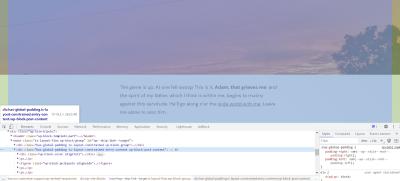If you’re running a WordPress website and want to reach a global audience, chances are you’ve come across the GTranslate plugin. It’s a popular tool that helps translate your site content into multiple languages, making your website more accessible to visitors worldwide. But a common question is whether using this plugin impacts your website’s database storage. After all, managing storage is crucial for site performance and scalability. In this post, we’ll explore what the GTranslate plugin does, how it integrates with your site, and whether it really affects your database size. Let’s dive in and clear up the confusion!
How the GTranslate Plugin Works on Your WordPress Site

The GTranslate plugin operates by adding a translation layer to your website, allowing visitors to view your content in their preferred language. It’s like having a multilingual interpreter right there on your site. But how does it do this behind the scenes?
When you install and activate the GTranslate plugin, it leverages Google’s Translate API to generate translated versions of your pages. There are generally two ways it handles translations:
- Automatic Translation: The plugin instantly translates your content using Google’s AI-driven translation service. This is quick and requires minimal setup.
- Manual Translation or Customizations: You can also add human-made translations or tweak automatic ones for better accuracy.
Now, regarding how it affects your database:
- Cached Translations: To speed up load times and improve user experience, the plugin can store translated versions of your pages locally, creating cache files or database entries.
- Database Storage: These cached translations are saved in your WordPress database or as static files, depending on your settings.
So, while the plugin does create additional data to serve translated content efficiently, it primarily stores this information as cache rather than duplicating your entire site content. This means that, in most cases, the impact on your database storage is manageable. However, if your site has a lot of pages and many languages enabled, the cached data can grow over time. We’ll look into that more in the next sections, but overall, GTranslate is designed to be lightweight and doesn’t inherently cause massive database bloat. Instead, it balances translation convenience with efficient storage practices, ensuring your site remains fast and responsive while offering multilingual support.
3. Understanding Database Storage in WordPress
Before diving into whether GTranslate impacts your database storage, let’s take a quick moment to understand how WordPress manages its data. Think of your WordPress site as a digital filing cabinet — every post, page, comment, plugin setting, and even your site’s customization options are stored in a database, primarily MySQL or MariaDB.
At its core, the WordPress database is structured into several key tables, including:
- wp_posts: Stores all your content — posts, pages, attachments, and custom post types.
- wp_comments: Contains all comments made on your content.
- wp_options: Holds site-wide settings and plugin configurations.
- wp_users: Stores your user information.
- wp_postmeta: Extra metadata related to posts and pages.
- wp_term_relationships, wp_terms, wp_term_taxonomy: Handle categories, tags, and custom taxonomies.
Every time you create a new post, install a plugin, or change a setting, data gets written into these tables. Over time, especially with large sites or active plugins, the database can become quite hefty. This can impact site speed, backup times, and overall performance.
It’s crucial to keep an eye on your database size and optimize it regularly. Things like cleaning up old revisions, spam comments, or unused plugins can help manage storage. Now, with this understanding, let’s look at how translation plugins like GTranslate fit into this picture.
4. Does Using GTranslate Affect Your Database Storage?
Great question! You might be wondering, does adding a translation plugin like GTranslate cause your database to bloat? The short answer is: it depends, but most of the heavy lifting doesn’t actually happen inside your database.
GTranslate primarily works by integrating with Google Translate’s API to generate translated versions of your content. When a user visits your site and views a translated page, GTranslate loads the translated content dynamically — often using JavaScript or similar methods — without creating new posts or pages in your database for each translation.
However, there are some nuances to consider:
- Cached Translations: If you’re using a caching mechanism or a premium version of GTranslate that stores translated content locally, then yes, your database might store some translation data. This could include cached versions or translation metadata, which could slightly increase database size.
- Plugin Settings: Some translation plugins store configuration data, logs, or translation history in your database. Over time, these entries might accumulate and add to your database size.
- Content Duplication: Unlike multi-language plugins that create separate posts or pages for each language, GTranslate doesn’t duplicate your content in the database. Instead, it displays translations on the fly, so your original content remains unchanged.
In essence, GTranslate’s impact on your database storage is minimal compared to plugins that duplicate or create separate content entries. Your main concern should be cache management and plugin configuration. If you notice your database growing unusually large after installing GTranslate, it’s worth checking for cached translation data or logs stored by the plugin or related caching tools.
To keep your database lean, consider regular cleanups, optimizing tables, and reviewing plugin settings. This way, you can enjoy the benefits of multilingual content without sacrificing site performance or storage capacity.
5. Factors That Can Influence Database Size When Using GTranslate
When you’re using the GTranslate plugin on your WordPress site, it’s natural to wonder how it might impact your database size. After all, any plugin that adds data or functionality can potentially influence your site’s storage needs. Let’s explore some of the key factors that can affect your database size when implementing GTranslate.
1. Translation Cache Storage
One of the main ways GTranslate works is by caching translated content to speed up future page loads. This caching is stored directly in your database, often in custom tables or as part of existing ones. The more pages you translate and the more languages you support, the larger this cache can become over time.
2. Number of Supported Languages
Supporting multiple languages means creating separate translations for each. This not only impacts your front-end content but also increases the amount of data stored in your database. If you’re offering 10 languages, the plugin needs to store multiple versions of your pages, which can significantly grow your database footprint.
3. Frequency of Content Updates
If your website content changes frequently, GTranslate’s cache will need to be updated regularly. This can lead to more frequent database writes, which, over time, contribute to increased storage use. Managing cache expiration and updates is essential to prevent unnecessary bloat.
4. Use of Additional Features
Some GTranslate features, like automatic language detection or the integration of translated metadata, can add extra tables or data points to your database. While these features enhance user experience, they can also influence database growth depending on how extensively they’re used.
5. Database Optimization and Maintenance
Regularly performing database maintenance tasks such as cleaning up old cache entries, optimizing tables, and removing unused data helps keep your database lean. Neglecting these practices can lead to unnecessary storage consumption, especially when using plugins like GTranslate that generate a lot of cached data.
In summary, while GTranslate itself doesn’t drastically bloat your database, the way you configure and manage it plays a significant role. Understanding these factors helps you make informed decisions to balance multilingual support with optimal database health.
6. Best Practices to Manage Database Growth with GTranslate
Managing your database size is crucial, especially when using a powerful plugin like GTranslate that can generate a lot of cached data. Here are some practical tips to keep your database clean, efficient, and healthy while providing a seamless multilingual experience:
- Set Cache Expiration Limits: Configure GTranslate to automatically clear cached translations after a certain period. This prevents outdated data from accumulating and keeps your database from growing unnecessarily.
- Regularly Perform Database Maintenance: Use plugins like WP-Optimize or WP-Sweep to clean up unnecessary data, optimize tables, and remove expired cache entries. Scheduling these tasks monthly can make a big difference.
- Limit the Number of Supported Languages: Only support the languages that are essential for your audience. Reducing the number of languages directly cuts down on stored translations and cache data.
- Use Static Translations When Possible: Instead of relying solely on automatic translation, consider creating static, manually translated pages for high-traffic content. This reduces cache size and improves load times.
- Monitor Database Growth: Keep an eye on your database size via hosting control panels or WordPress database tools. If you notice unexpected growth, investigate and adjust cache settings accordingly.
- Implement a Clear Cache Strategy: Periodically clear GTranslate’s cache manually or via scheduled tasks to prevent buildup of outdated translations.
- Optimize Your Hosting Environment: Choose hosting plans with ample database storage and support for optimization plugins. A well-configured environment can handle cache data more efficiently.
By following these best practices, you can enjoy the benefits of multilingual content without sacrificing your site’s performance or bloating your database. Remember, the key is to strike a balance between providing a rich multilingual experience and maintaining a lean, fast website. Regular maintenance, thoughtful configurations, and monitoring are your best tools to keep your database in check while using GTranslate effectively.
Conclusion: Evaluating GTranslate Impact on Your Website’s Storage
After analyzing the functionality and features of the WordPress GTranslate plugin, it is clear that its primary purpose is to enhance multilingual support without significantly affecting your website’s database storage. Unlike plugins that generate extensive content, duplicate pages, or store large translation files directly within your database, GTranslate operates mainly through external translation services. This means that most translations are fetched dynamically, which minimizes the need to store multiple language versions locally.
However, there are a few factors to consider:
- Cached Translations: GTranslate can cache translations to improve performance, which may lead to a slight increase in database size over time. Regular cache management can help control this growth.
- Plugin Data: Like any plugin, GTranslate stores some configuration data in your database, but this is typically minimal compared to content-heavy plugins.
- Media Files: If you utilize manual translations or add custom language-specific media, these will consume storage but are not directly related to GTranslate’s core operations.
Overall, GTranslate is a lightweight solution that does not substantially impact your database storage, especially when compared to other translation plugins that duplicate content or generate new pages. To keep your database optimized, regularly review cached data and perform routine maintenance.
In conclusion, if your primary concern is maintaining optimal database size while offering multilingual support, GTranslate remains an efficient choice that balances functionality with minimal storage overhead.


